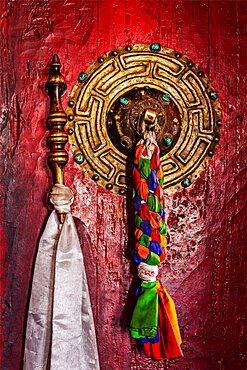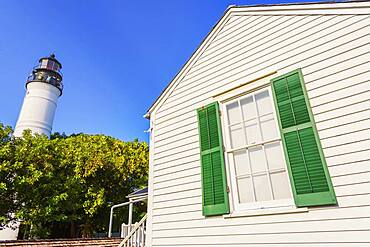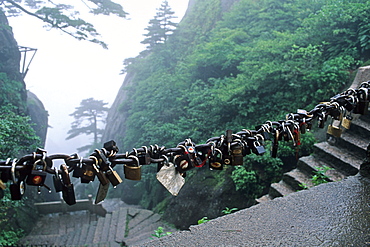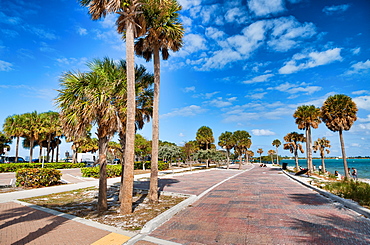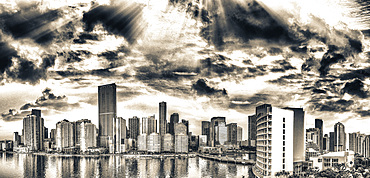Recent searches
Loading...
1373-47 - Architectural detail of The Vessel, a 16 storey structure and visitor attraction constructed as a key element of the Hudson Yards Redevelopment Project, Manhattan, New York City, United States of America, North America
1373-46 - Architectural detail of The Vessel, a 16 storey structure and visitor attraction constructed as a key element of the Hudson Yards Redevelopment Project, Manhattan, New York City, United States of America, North America
1373-43 - Architectural detail of The Vessel, a 16 storey structure and visitor attraction constructed as a key element of the Hudson Yards Redevelopment Project, Manhattan, New York City, United States of America, North America
1373-42 - Architectural detail of The Vessel, a 16 storey structure and visitor attraction constructed as a key element of the Hudson Yards Redevelopment Project, Manhattan, New York City, United States of America, North America
832-403675 - Overhead view young woman playing piano
832-403866 - Close up boy touching digital tablet screen white desk
832-403811 - Flat lay keyboard with notebook with password information
832-403753 - New home keys plan table with defocused couple
832-403160 - Real estate agent shaking hand client holding keys
832-401295 - Elegant girl sits at the concert grand and plays the piano
832-401296 - Elegant girl sits at the concert grand and plays the piano
826-780 - St. Aidan's Church, a 12th century place of worship, a key location in spreading Christianity during the Anglo-Saxon era, and its churchyard, Bamburgh, Northumberland, England, United Kingdom, Europe
826-777 - Anglo-Saxon Cross in the churchyard of St. Aidan's Church, a 12th century place of worship and a key location in the introduction of Christianity during Anglo-Saxon times, Bamburgh, Northumberland, England, United Kingdom, Europe
832-401065 - Hawksbill turtle (Eretmochelys imbricata imbricata), John Pennekamp Coral Reef State Park dive site, Key Largo, Florida Keys, Florida, USA, North America
832-401049 - Atlantic goliath grouper (Epinephelus itajara) with open mouth at cleaning station. Dive site John Pennekamp Coral Reef State Park, Key Largo, Florida Keys, Florida, USA, North America
832-401047 - Caribbean reef shark (Carcharhinus perezii), John Pennekamp Coral Reef State Park dive site, Key Largo, Florida Keys, Florida, USA, North America
832-401046 - Green turtle (Chelonia mydas), dive site John Pennekamp Coral Reef State Park, Key Largo, Florida Keys, Florida, USA, North America
832-398407 - Low key photo of whiskey with ice in facetted rocks glass
832-398276 - Low key photo of dining table with candlelight
1366-234 - Abu Simbel, Aswan, Egypt. February 23, 2022. Caretaker holding a large key in the shape of an Ankh in the Great Temple of Ramesses II.
1366-232 - Abu Simbel, Aswan, Egypt. February 23, 2022. Caretaker holding a large key in the shape of an Ankh in the Great Temple of Ramesses II.
1366-233 - Abu Simbel, Aswan, Egypt. February 23, 2022. Caretaker holding a large key in the shape of an Ankh in the Great Temple of Ramesses II.
1366-231 - Abu Simbel, Aswan, Egypt. February 23, 2022. Caretaker holding a large key in the shape of an Ankh in the Great Temple of Ramesses II.
1366-230 - Abu Simbel, Aswan, Egypt. February 23, 2022. Caretaker holding a large key in the shape of an Ankh in the Great Temple of Ramesses II.
1366-229 - Abu Simbel, Aswan, Egypt. February 23, 2022. Caretaker holding a large key in the shape of an Ankh in the Great Temple of Ramesses II.
1366-228 - Abu Simbel, Aswan, Egypt. February 23, 2022. Caretaker holding a large key in the shape of an Ankh in the Great Temple of Ramesses II.
1366-164 - Abu Simbel, Aswan, Egypt. February 22, 2022. Caretaker holding a large key in the shape of an anhk at the Great Temple of Ramesses II.
1178-43964 - Egypt, Luxor, Hotel room key with golden tag
832-397724 - Door handle of gate door of gompa, Tibetan Buddhist monastery. Diskit, Nubra valley, Ladakh, India, Asia
1113-107541 - large stone key on the roof of a boutique hotel, Oia, Santorini, Santorin, Cyclades, Aegean Sea, Mediterranean Sea, Greece, Europe
1178-42934 - Heart shaped key on decorative white cloth
1292-2364 - Piazza San Pietro, Vatican City, UNESCO World Heritage Site, Rome, Lazio, Italy, Europe
1292-2363 - Piazza San Pietro, Vatican City, UNESCO World Heritage Site, Rome, Lazio, Italy, Europe
1353-39 - High Key image of weathered Creel Boat Peedie Lass, Cromarty Boatyard, The Black Isle, Moray, Scotland, United Kingdom, Europe
1178-41225 - Smiling Mixed Race woman unlocking apartment mailbox
1178-38921 - Purse, wallet, gun and accessories on blue background
1178-38922 - Caucasian woman laying on floor near wallet, gun and cell phone
1113-105728 - Detail shot of a Chinese, decorative key chain. Bali, Indonesia.
1350-2569 - Great barracuda, Sphyraena barracuda, and divers, Molasses Reef, Key Largo, Florida, USA, Atlantic Ocean
1350-2688 - Verges, a small town in the Northeast of Catalonia (Spain), during Easter celebrates the Procession of Verges with skeletons dancing on the sound of a drum, Roman soldiers, known as the 'Manages', and a representation of the life and crucifixion of Jesus Christ. The Procession features the Dance of Death, a tradition from the Middle Age associated with epidemics and plagues and the only one remaining in Spain Ten skeletons dance to the beat of a drum to remember that no one is exempt of death. The backdrop of the medieval walls and towers of Verges is key to this macabre staging.
1350-2570 - Scuba diver handles nurse shark, Ginglymostoma cirratum, Molasses Reef, Key Largo, Florida, USA, Atlantic Ocean
1350-2693 - Verges, a small town in the Northeast of Catalonia (Spain), during Easter celebrates the Procession of Verges with skeletons dancing on the sound of a drum, Roman soldiers, known as the 'Manages', and a representation of the life and crucifixion of Jesus Christ. The Procession features the Dance of Death, a tradition from the Middle Age associated with epidemics and plagues and the only one remaining in Spain Ten skeletons dance to the beat of a drum to remember that no one is exempt of death. The backdrop of the medieval walls and towers of Verges is key to this macabre staging.
1350-2692 - Verges, a small town in the Northeast of Catalonia (Spain), during Easter celebrates the Procession of Verges with skeletons dancing on the sound of a drum, Roman soldiers, known as the 'Manages', and a representation of the life and crucifixion of Jesus Christ. The Procession features the Dance of Death, a tradition from the Middle Age associated with epidemics and plagues and the only one remaining in Spain Ten skeletons dance to the beat of a drum to remember that no one is exempt of death. The backdrop of the medieval walls and towers of Verges is key to this macabre staging.
1350-2695 - Verges, a small town in the Northeast of Catalonia (Spain), during Easter celebrates the Procession of Verges with skeletons dancing on the sound of a drum, Roman soldiers, known as the 'Manages', and a representation of the life and crucifixion of Jesus Christ. The Procession features the Dance of Death, a tradition from the Middle Age associated with epidemics and plagues and the only one remaining in Spain Ten skeletons dance to the beat of a drum to remember that no one is exempt of death. The backdrop of the medieval walls and towers of Verges is key to this macabre staging.
1350-2690 - Verges, a small town in the Northeast of Catalonia (Spain), during Easter celebrates the Procession of Verges with skeletons dancing on the sound of a drum, Roman soldiers, known as the 'Manages', and a representation of the life and crucifixion of Jesus Christ. The Procession features the Dance of Death, a tradition from the Middle Age associated with epidemics and plagues and the only one remaining in Spain Ten skeletons dance to the beat of a drum to remember that no one is exempt of death. The backdrop of the medieval walls and towers of Verges is key to this macabre staging.
1350-2691 - Verges, a small town in the Northeast of Catalonia (Spain), during Easter celebrates the Procession of Verges with skeletons dancing on the sound of a drum, Roman soldiers, known as the 'Manages', and a representation of the life and crucifixion of Jesus Christ. The Procession features the Dance of Death, a tradition from the Middle Age associated with epidemics and plagues and the only one remaining in Spain Ten skeletons dance to the beat of a drum to remember that no one is exempt of death. The backdrop of the medieval walls and towers of Verges is key to this macabre staging.
1350-2687 - Verges, a small town in the Northeast of Catalonia (Spain), during Easter celebrates the Procession of Verges with skeletons dancing on the sound of a drum, Roman soldiers, known as the 'Manages', and a representation of the life and crucifixion of Jesus Christ. The Procession features the Dance of Death, a tradition from the Middle Age associated with epidemics and plagues and the only one remaining in Spain Ten skeletons dance to the beat of a drum to remember that no one is exempt of death. The backdrop of the medieval walls and towers of Verges is key to this macabre staging.
1350-2689 - Verges, a small town in the Northeast of Catalonia (Spain), during Easter celebrates the Procession of Verges with skeletons dancing on the sound of a drum, Roman soldiers, known as the 'Manages', and a representation of the life and crucifixion of Jesus Christ. The Procession features the Dance of Death, a tradition from the Middle Age associated with epidemics and plagues and the only one remaining in Spain Ten skeletons dance to the beat of a drum to remember that no one is exempt of death. The backdrop of the medieval walls and towers of Verges is key to this macabre staging.
1350-2696 - Verges, a small town in the Northeast of Catalonia (Spain), during Easter celebrates the Procession of Verges with skeletons dancing on the sound of a drum, Roman soldiers, known as the 'Manages', and a representation of the life and crucifixion of Jesus Christ. The Procession features the Dance of Death, a tradition from the Middle Age associated with epidemics and plagues and the only one remaining in Spain Ten skeletons dance to the beat of a drum to remember that no one is exempt of death. The backdrop of the medieval walls and towers of Verges is key to this macabre staging.
1350-2697 - Verges, a small town in the Northeast of Catalonia (Spain), during Easter celebrates the Procession of Verges with skeletons dancing on the sound of a drum, Roman soldiers, known as the 'Manages', and a representation of the life and crucifixion of Jesus Christ. The Procession features the Dance of Death, a tradition from the Middle Age associated with epidemics and plagues and the only one remaining in Spain Ten skeletons dance to the beat of a drum to remember that no one is exempt of death. The backdrop of the medieval walls and towers of Verges is key to this macabre staging.
1350-2694 - Verges, a small town in the Northeast of Catalonia (Spain), during Easter celebrates the Procession of Verges with skeletons dancing on the sound of a drum, Roman soldiers, known as the 'Manages', and a representation of the life and crucifixion of Jesus Christ. The Procession features the Dance of Death, a tradition from the Middle Age associated with epidemics and plagues and the only one remaining in Spain Ten skeletons dance to the beat of a drum to remember that no one is exempt of death. The backdrop of the medieval walls and towers of Verges is key to this macabre staging.
832-392874 - Woman signing real estate contract papers holding house keys and home keychain with small model home in front
832-392876 - Real estate agent and customer sign contract papers with house keys and small model home in front
832-391471 - Highway patrol police and sports car next to alcoholic drink and keys under spot light
718-2675 - Smathers Beach, Key West, Florida, United States of America, North America
718-2674 - Lighthouse, Key West, Florida, United States of America, North America
718-2673 - Lighthouse, Key West, Florida, United States of America, North America
718-2655 - Brown pelican (Pelecanus occidentalis) fishing, Key West, Florida, United States of America, North America
1116-49232 - Bouquet of colourful flowers in a decorative container
1116-49234 - Bouquet of colourful flowers in a decorative container
1113-103593 - padlocks, locked and the key thrown down the mountain, symbol for couples to pledge faithfulness, mountain, Huang Shan, Anhui province, China, Asia, World Heritage, UNESCO
1310-283 - View through palm trees to facade of a typical wooden house, Old Town, Key West, Florida Keys, Florida, United States of America, North America
1310-287 - View across the Gulf of Mexico, sunset, brown pelican prominent, Mallory Square, Old Town, Key West, Florida Keys, Florida, United States of America, North America
1310-281 - Typical pastel-coloured wooden houses on Truman Avenue, Old Town, Key West, Florida Keys, Florida, United States of America, North America
1310-282 - Victorian brick-built clock tower of the Monroe County Court House, Old Town, Key West, Florida Keys, Florida, United States of America, North America
1310-285 - Giant US flag flying beneath a deep blue sky above Truman Avenue, Old Town, Key West, Florida Keys, Florida, United States of America, North America
1310-284 - Brilliant white facade of the historic Curry Mansion, now a guest house, Old Town, Key West, Florida Keys, Florida, United States of America, North America
1310-280 - Author's studio at the Ernest Hemingway Home and Museum, Old Town, Key West, Florida Keys, Florida, United States of America, North America
1310-286 - Adult male red-bellied woodpecker (Melanerpes carolinus), clinging to tree, Key Vaca, Marathon, Florida Keys, Florida, United States of America, North America
832-388042 - Little egret (Egretta garzetta) at the beach, Longboat Key, Florida, USA, North America
832-388305 - Floating Mute swans (Cygnus olor) in fog, High Key, Lower Rhine, North Rhine-Westphalia, Germany, Europe
832-386788 - Locker with key in a financial institution, Duesseldorf, Germany, Europe
832-387145 - Statue of St. Peter holding the key at Piazza San Pietro, Vatican, Rome, Italy, Europe
832-384581 - Hand taps computer keyboard, motion blur, Germany, Europe
1178-28993 - Disinfectant wipes, smart phone and keys
1323-3 - Joshua Tree in high-key black and white, Joshua Tree National Park, California, United States of America, North America
746-89437 - Road to Downtown Miami from Brickell Key Drive
746-89508 - Palms and park along Rickenbacker Causeway, Maimi.
746-89413 - Panoramic aerial view of Downtown Miami and Brickell Key at sunrise.
1178-28462 - Illuminated question mark key on keyboard
1178-28461 - Illuminated 'delete' key on keyboard































